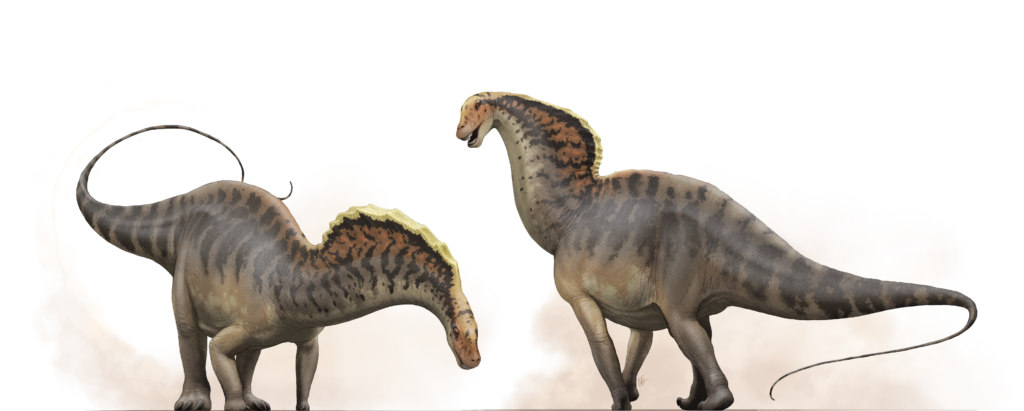Dinosaurs dominated Earth for over 165 million years, yet their methods of communication remain one of paleontology’s most fascinating mysteries. Unlike fossilized bones, communication behaviors rarely leave direct evidence in the fossil record. Scientists must therefore approach this question through careful analysis of anatomical structures, trace fossils, and comparative studies with modern animals—particularly birds and reptiles, the closest living relatives to dinosaurs. By examining the communication strategies of today’s creatures and applying evolutionary principles, researchers can develop compelling theories about how these magnificent prehistoric beings might have interacted with their world and each other. This exploration not only illuminates dinosaur behavior but also highlights the remarkable continuity of biological communication systems across millions of years of evolution.
The Challenge of Studying Prehistoric Communication
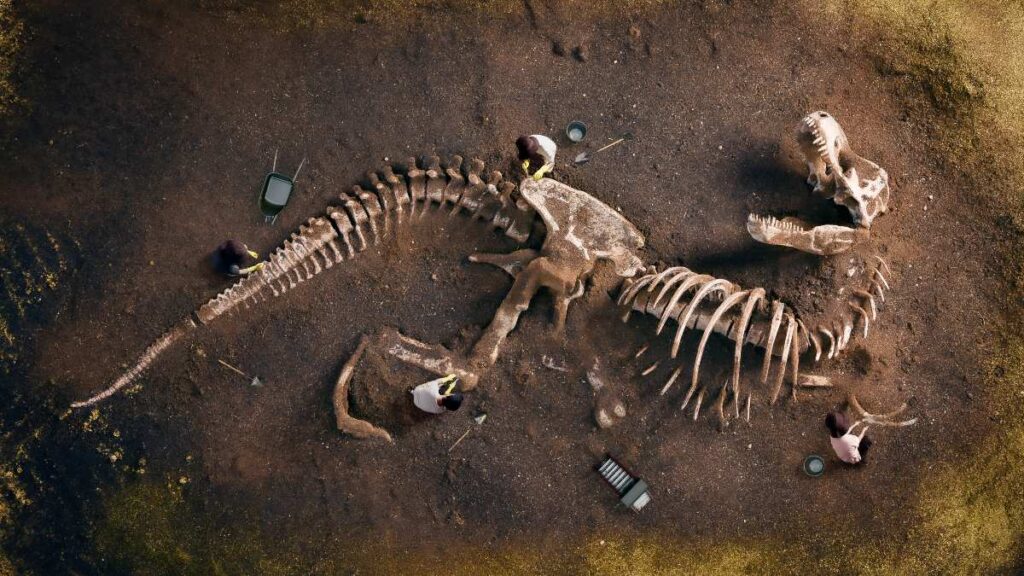
Reconstructing dinosaur communication presents unique challenges compared to understanding their physical appearance or diet. While bones and teeth fossilize readily, vocalizations, visual displays, and chemical signals leave virtually no direct trace in the fossil record. Paleontologists must instead rely on indirect evidence, such as the structure of sense organs, specialized anatomical features, and behavioral inferences based on modern animals. The field combines traditional paleontology with comparative biology, neuroscience, and biomechanics to build plausible scenarios about dinosaur communication. This detective work requires careful analysis of subtle clues, from the structure of brain cases that housed sensory organs to the distribution patterns of fossil remains that might indicate social grouping. Despite these challenges, scientific advances continue to provide increasingly sophisticated insights into how dinosaurs likely shared information with each other.
Vocal Communication: What Did Dinosaurs Sound Like?

Contrary to the dramatic roars depicted in popular media, dinosaur vocalizations were likely far more diverse and species-specific. Evidence from fossilized throat structures suggests many dinosaurs possessed the anatomical equipment for producing sounds, though not necessarily mammal-like roars. Hadrosaurs (duck-billed dinosaurs) had particularly advanced vocal capabilities, with elaborate hollow crests that likely functioned as resonance chambers. The discovery of a dinosaur called Parasaurolophus with a 7-foot hollow crest suggests these animals could produce deep, resonant tones similar to a trombone or trumpet. Meanwhile, smaller therapods related to modern birds might have chirped, hissed, or made calls reminiscent of today’s avian relatives. Research on crocodilians, the other living archosaur lineage besides birds, reveals complex vocalizations including bellows, hisses, and growls, suggesting their dinosaur cousins might have utilized similar acoustic communication strategies. The specific sounds remain speculative, but the evidence strongly indicates dinosaurs were not silent creatures.
Visual Displays: Crests, Frills, and Coloration

Many dinosaurs possessed striking visual features that likely served important communication functions, particularly for mate attraction and species recognition. The elaborate neck frills of ceratopsians like Triceratops, the tall crests of hadrosaurs, and the dramatic plates of stegosaurs were almost certainly used in visual displays. Recent discoveries about dinosaur coloration, based on preserved melanosomes (pigment-containing structures) in exceptionally preserved fossils, reveal that some dinosaurs had vibrant patterns and colors. Sinosauropteryx, a small theropod, had a reddish-brown body with a striped tail, while Microraptor showed iridescent black feathers similar to modern crows. These features parallel display structures seen in modern birds, where bright colors and elaborate plumage serve crucial roles in courtship displays and territorial signaling. The discovery of feathered dinosaurs with preserved pigmentation patterns strongly suggests that visual communication was highly developed in many dinosaur species, particularly among smaller theropods related to birds.
Chemical Communication: The Invisible Signal System

Chemical communication through pheromones and scent marking likely played a significant role in dinosaur social interactions, though this form of communication leaves virtually no fossil evidence. Modern reptiles and birds use chemical signals extensively for territorial marking, mate attraction, and recognition of kin. Dinosaurs, with their similar sensory adaptations, probably employed comparable chemical signaling systems. Some paleontologists speculate that certain dinosaurs might have possessed specialized scent glands, similar to those found in crocodilians and some birds. These chemical signals could have been particularly important for nocturnal species or those living in densely vegetated environments where visual and vocal signals might be less effective. Additionally, chemical signals can persist in the environment longer than visual or vocal cues, allowing dinosaurs to communicate across time, marking territories or nesting sites even when not physically present. Though speculative, the persistence of chemical communication across so many modern vertebrate groups strongly suggests dinosaurs utilized this communication channel as well.
Lessons from Birds: Dinosaurs’ Living Descendants

Modern birds, as the direct descendants of theropod dinosaurs, provide compelling models for understanding dinosaur communication systems. Birds employ sophisticated multi-modal communication involving vocalizations, visual displays, and physical performances. The complex courtship dances of modern birds like cranes and albatrosses may have evolved from similar behaviors in their dinosaur ancestors. Cassowaries and other large ground birds use deep, resonant vocalizations produced by specialized chambers and structures, potentially similar to those of some dinosaurs. Particularly revealing is the complex social communication of corvids (crows and ravens) and parrots, which demonstrates how intelligence and complex communication likely co-evolved in the theropod lineage. The diversity of communication strategies among modern birds—from elaborate visual displays to sophisticated vocalizations—suggests their dinosaur ancestors may have employed similarly diverse communication methods. Birds essentially represent living dinosaurs that have continued to evolve communication strategies for another 66 million years beyond the non-avian dinosaur extinction.
Insights from Crocodilians: The Other Living Archosaurs
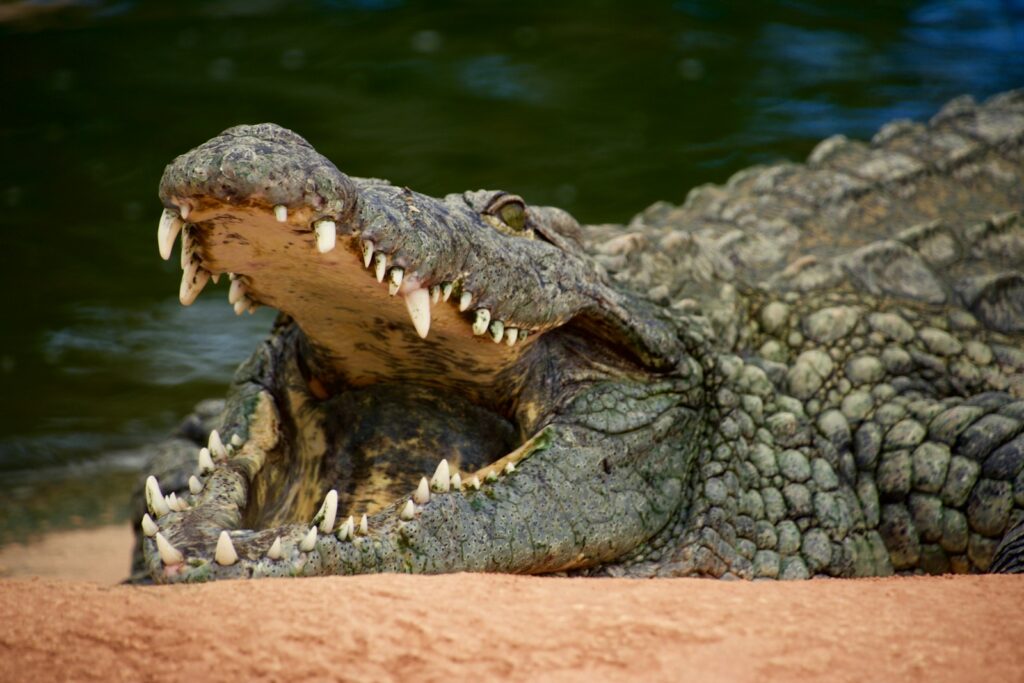
Crocodilians, including alligators and crocodiles, share a common ancestor with dinosaurs and birds, making them valuable subjects for understanding possible dinosaur communication. These powerful reptiles employ sophisticated communication strategies that might mirror those used by dinosaurs. Male alligators produce impressive low-frequency bellows by vibrating their bodies and creating water droplet fountains that dance on their backs during mating displays. Crocodilians also use infrasound—vibrations below human hearing range—that can travel long distances through water and ground. These sounds play crucial roles in territorial defense and mate attraction. Additionally, crocodilians communicate through body postures, jaw slaps against water, and chemical signals. The fact that both modern bird and crocodilian lineages independently evolved complex communication suggests their common ancestors—including dinosaurs—likely possessed significant communication abilities as well. The vibration-sensitive organs on crocodilian faces might have analogues in certain dinosaur species, potentially allowing them to detect subtle environmental and social signals.
Social Structures and Communication Complexity

Fossil evidence increasingly suggests many dinosaur species lived in complex social groups, which would have required sophisticated communication systems. Trackways showing multiple individuals moving together, massive bone beds containing numerous individuals of the same species, and nesting colonies all point to social behavior in many dinosaur species. Hadrosaur nesting sites with evidence of communal rearing of young suggest complex family structures similar to those of modern birds. Such social complexity typically correlates with more developed communication systems, as seen in modern social animals. Maiasaura, a duck-billed dinosaur whose name means “good mother lizard,” appears to have nested in colonies and cared for hatchlings, behaviors that would have required coordination through vocalizations or other signals. The discovery of multiple tyrannosaurid specimens together suggests even some large predators may have exhibited social behaviors requiring communication. These social structures would have created evolutionary pressure for clearer and more complex signaling systems, potentially driving the development of sophisticated communication in many dinosaur lineages.
Interpreting Skull Structure for Sensory Capabilities

The structure of dinosaur skulls provides critical insights into their sensory capabilities and, by extension, their communication methods. CT scanning of fossil skulls reveals the size and shape of brain regions associated with different senses, indicating which were most important for different species. Many theropod dinosaurs had enlarged olfactory bulbs, suggesting a keen sense of smell possibly used for detecting chemical signals from other individuals. The orientation and size of eye sockets in different species indicate visual acuity and field of view, with predators typically having forward-facing eyes for better depth perception. Inner ear structures preserved in some fossils allow scientists to estimate hearing ranges, with some dinosaurs potentially capable of detecting low-frequency sounds similar to modern elephants or high-frequency sounds like birds. Tyrannosaurs show evidence of low-frequency hearing sensitivity, possibly allowing them to communicate over long distances using infrasound. These anatomical details, combined with knowledge of modern animal communication, help paleontologists reconstruct the sensory world of dinosaurs and understand how they might have exchanged information.
The Significance of Head Crests and Chambers

The elaborate head crests found in many dinosaur species, particularly hadrosaurs, likely served crucial communication functions. Parasaurolophus possessed a dramatic backward-curving hollow crest up to 7 feet long, while Lambeosaurus had a hatchet-shaped crest with complex internal chambers. Computer modeling and acoustic analysis of these structures suggest they functioned as resonance chambers capable of producing distinctive low-frequency sounds. These sounds would have been species-specific, allowing individuals to recognize members of their own kind across distances where visual identification might be difficult. The variations in crest size and shape between males and females of the same species strongly suggest these structures played roles in sexual selection and mate attraction, similar to how modern birds use distinctive calls during courtship. Additionally, the visual impact of these dramatic head ornaments would have created instant species recognition, important in environments where multiple similar dinosaur species coexisted. These multifunctional structures represent one of the clearest examples of specialized communication adaptations in dinosaurs.
Feathers, Displays, and Visual Communication

The discovery that many dinosaur species possessed feathers has revolutionized our understanding of dinosaur communication. Beyond their potential roles in insulation and flight, feathers provided dramatic visual display capabilities similar to those seen in modern birds. Microraptor, a small four-winged dinosaur, had iridescent black feathers that would have created stunning visual displays in sunlight. Caudipteryx had long display feathers on its tail and arms that could be fanned out, likely for courtship or intimidation displays. Even larger dinosaurs like Yutyrannus, a relative of T. rex, possessed primitive feathers that might have been fluffed or raised during displays. The preservation of melanosomes in some fossils has allowed scientists to reconstruct actual colors and patterns, revealing that some dinosaurs had striking visual appearances including stripes, spots, and countershading. These discoveries suggest visual communication through body ornaments and dynamic displays was probably widespread among dinosaurs, particularly theropods. The evolution of increasingly elaborate feather displays likely began long before birds evolved, serving crucial communication functions in dinosaur social interactions.
Postures, Movements, and Physical Displays
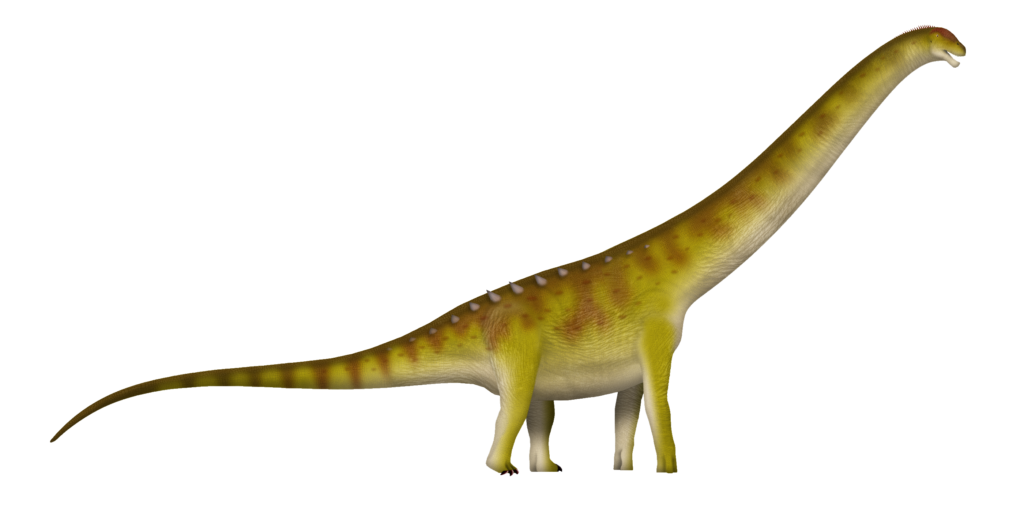
Skeletal adaptations in many dinosaur species suggest they engaged in complex physical displays involving distinctive postures and movements. The flexible necks of sauropods and the articulated tails of many dinosaurs could have been used in visual communication displays similar to how modern birds and reptiles position their bodies during courtship or confrontations. Therizinosaurs, with their enormous front claws, may have used them not just for feeding but for dramatic display behaviors. The shoulder girdles of many dinosaurs show muscle attachment points suggesting they could perform specific movements ideal for display, such as raising their arms or spreading their claws. Analysis of joint mobility in theropod dinosaurs indicates many could adopt dramatic poses with outstretched arms, potentially for intimidation or courtship displays. The famous “arms” of T. rex, though small, show evidence of powerful muscles, suggesting they may have had specific display functions rather than being vestigial as often portrayed. These physical capabilities, combined with colorful feathers or skin, would have created impressive multi-component displays that served various communication functions in dinosaur societies.
Evolutionary Pressures and Communication Development

The evolution of communication systems in dinosaurs was shaped by specific ecological and social pressures similar to those affecting modern animals. Competition for mates likely drove the development of elaborate display structures and behaviors, particularly in species where visual evidence suggests sexual dimorphism. Predator-prey dynamics would have favored alarm calls or signals that could quickly alert group members to danger, similar to the warning calls seen in many modern birds and mammals. Environmental conditions also influenced communication methods, with dense forest environments favoring acoustic or chemical signals over visual ones, while open habitats might have selected for visible displays at greater distances. The arms race between predator detection and prey concealment would have driven increasingly sophisticated communication systems on both sides. Additionally, parental care, documented in several dinosaur species, would have required communication between parents and offspring. These evolutionary pressures operated over the 165 million years of dinosaur dominance, resulting in diverse and specialized communication adaptations across different lineages, ultimately culminating in the extraordinarily complex communication systems seen in modern birds.
Future Research Directions and Technologies

Emerging technologies continue to open new windows into potential dinosaur communication methods. Advanced CT scanning now allows paleontologists to examine the internal structures of fossils without damaging them, revealing sensory capabilities and brain structures related to communication. Biomechanical modeling using powerful computers can simulate how dinosaur vocal structures might have functioned, predicting the sounds they could produce. New techniques for analyzing the chemical composition of fossils may eventually reveal traces of specialized glands used for chemical signaling. The rapidly expanding field of paleogenomics, while still limited to dinosaurs, may eventually provide insights into genes associated with sensory capabilities and communication. Field research continues to uncover new fossil evidence of social behaviors, including trackways and nesting sites that indicate complex interactions requiring communication. Increasingly sophisticated comparative studies with living birds and reptiles create ever more refined models of ancestral communication capabilities. These advances suggest our understanding of dinosaur communication will continue to evolve rapidly in the coming decades, potentially overturning current theories and revealing even more sophisticated communication systems than currently imagined.
Conclusion: The Complex Communication Lives of Dinosaurs
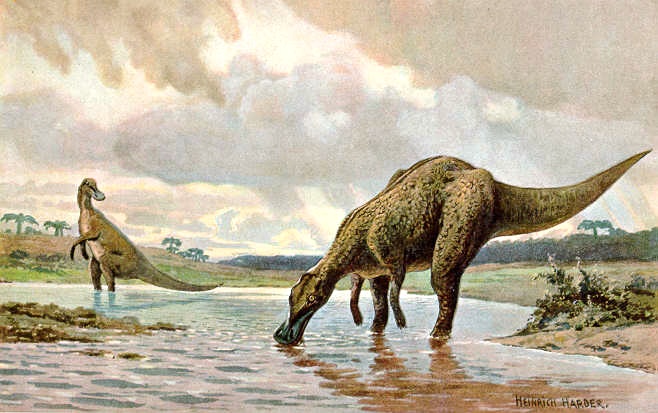
Far from the simple-minded reptiles once imagined, dinosaurs likely possessed sophisticated multi-modal communication systems tailored to their ecological niches and social structures. The evidence from comparative biology, fossil anatomy, and behavioral ecology converges to suggest dinosaurs employed a rich mixture of vocal, visual, chemical, and physical signals to navigate their social and ecological environments. The extraordinary diversity of dinosaur species—from massive sauropods to tiny bird-like theropods—implies an equally diverse array of communication strategies. While many details remain speculative, the scientific consensus increasingly points toward dinosaurs as complex communicators whose abilities in many cases may have rivaled those of modern mammals and birds. Their communication systems represent a crucial evolutionary bridge between the simpler signals of ancient reptiles and the sophisticated languages of modern birds. As research continues, our understanding of how dinosaurs communicated will undoubtedly deepen, providing further insights into the social lives of these extraordinary animals that dominated Earth’s ecosystems for so much of our planet’s history.

